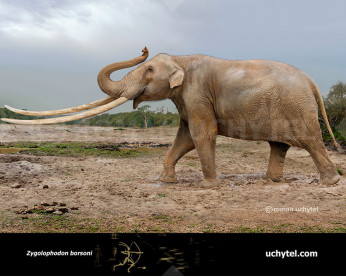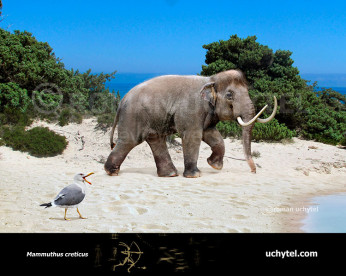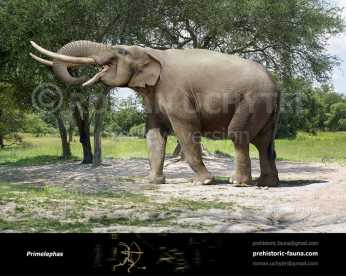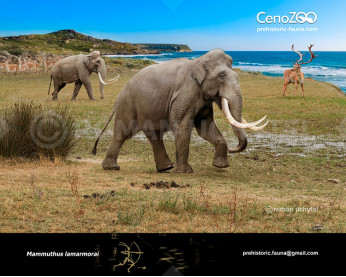Southern mammoth (Mammuthus meridionalis)
191191Southern mammoth (†Mammuthus meridionalis (Nesti, 1825))
Order: Proboscidea
Family: Elephantidae
Dimensions: length - 7 m, height - 3,5 -4 m, weight - 8000 kg
Temporal range: during the Late Pliocene - Early Pleistocene epoch (endemic to Europe and central Asia)
Mammuthus meridionalis, or the southern mammoth, is an extinct species of mammoth endemic to Europe and central Asia from the Pleistocene, living from 2.5–1.5 mya. With a height of about 4 m. and estimated weight of 10 tons, M. meridionalis is one of the largest proboscideans to have ever lived, along with other larger species of mammoth, and the earlier Deinotherium. It had robust twisted tusk, common of mammoths. Its molars had low crowns and a small number of thick enamel ridges, adapted to a woodland diet of leaves and shrubs, this indicates it lived on a relatively warm climate which makes more probable that it lacked dense fur. Plant and fossils found with the remains show that M. meridionalis was living in a time of mild climate, generally as warm or slightly warmer than Europe experiences today. Deciduous mixed wood provided its habitad and food, which compromised mostly of tree-browse: oak, ash, beech and other familiar European trees, as well as some that are now exotic to the region, such as hemlock, wing nut and hickory. A complete skeleton is in Stavropol State Museum. Further east, discoveries at Ubeidiyah (Israel) and Dmanisi (Georgia) show the early mammoth living in a partially open habitat with grassy areas, though subsisting on scattered trees and shrubs.
Southern mammoth (†Mammuthus meridionalis (Nesti, 1825))
Order: Proboscidea
Family: Elephantidae
Dimensions: length - 7 m, height - 3,5 -4 m, weight - 8000 kg
Temporal range: during the Late Pliocene - Early Pleistocene epoch (endemic to Europe and central Asia)
Mammuthus meridionalis, or the southern mammoth, is an extinct species of mammoth endemic to Europe and central Asia from the Pleistocene, living from 2.5–1.5 mya. With a height of about 4 m. and estimated weight of 10 tons, M. meridionalis is one of the largest proboscideans to have ever lived, along with other larger species of mammoth, and the earlier Deinotherium. It had robust twisted tusk, common of mammoths. Its molars had low crowns and a small number of thick enamel ridges, adapted to a woodland diet of leaves and shrubs, this indicates it lived on a relatively warm climate which makes more probable that it lacked dense fur. Plant and fossils found with the remains show that M. meridionalis was living in a time of mild climate, generally as warm or slightly warmer than Europe experiences today. Deciduous mixed wood provided its habitad and food, which compromised mostly of tree-browse: oak, ash, beech and other familiar European trees, as well as some that are now exotic to the region, such as hemlock, wing nut and hickory. A complete skeleton is in Stavropol State Museum. Further east, discoveries at Ubeidiyah (Israel) and Dmanisi (Georgia) show the early mammoth living in a partially open habitat with grassy areas, though subsisting on scattered trees and shrubs.

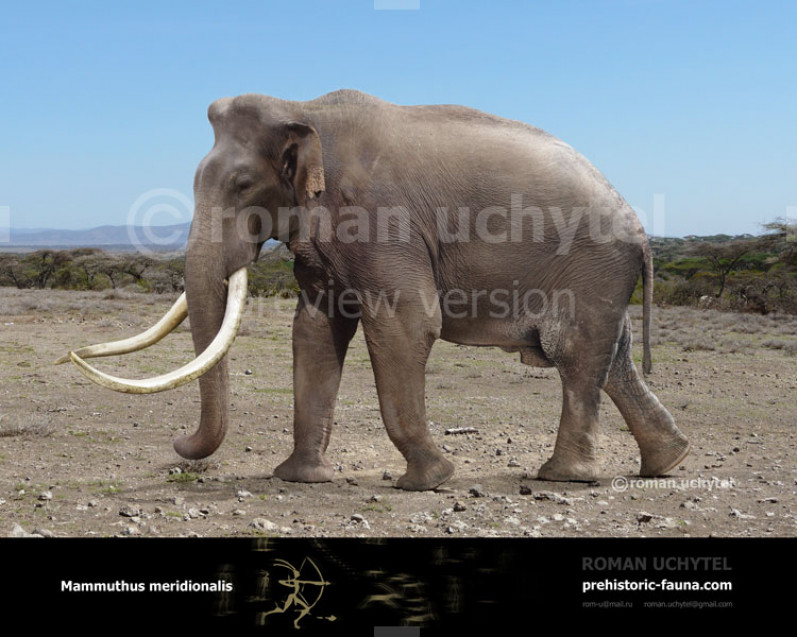
-797x638.jpg)
-797x638.jpg)
-797x638.jpg)
-797x638.jpg)

-70x56.jpg)
-70x56.jpg)
-70x56.jpg)
-70x56.jpg)
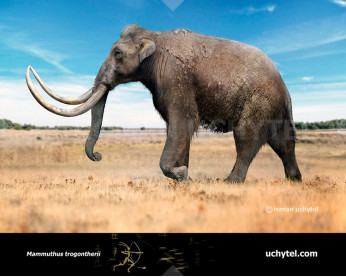
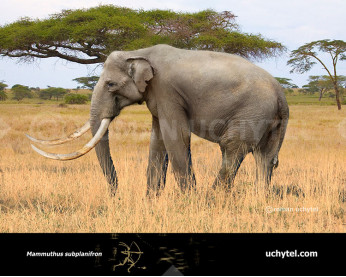
1-346x277.jpg)
